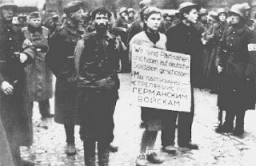You searched for: nazi germany
<< Previous | Displaying results 981-990 of 1276 for "nazi germany" | Next >>
-
German Invasion of Poland: Jewish Refugees, 1939
ArticleWhen Germany invaded Poland in September 1939, hundreds of thousands of Jewish and non-Jewish refugees fled the advancing German army. Learn about their experiences.
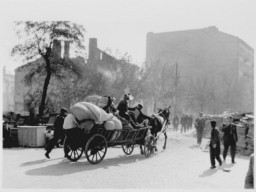
-
Josef Nassy
ArticleA Black expatriate artist living in Belgium upon the outbreak of WWII, Josef Nassy was held in German internment camps during the war. Learn about his experiences.
-
Mobile Killing Squads
ArticleLearn more about Nazi mobile killing squads (Einsatzgruppen) killing activities in the Soviet Union during World War II.

-
Page 2 of passport issued to Setty Sondheimer
DocumentSetty and Moritz Sondheimer and their two children fled Nazi Germany for Kovno, Lithuania, in 1934. There, Moritz opened a small factory manufacturing buttons and combs. This image shows page 2, containing an identification photograph, of a passport issued to Setty Sondheimer by the German Consulate in Kovno on January 29, 1938. With aid from Japanese diplomat Chiune Sugihara in obtaining Japanese transit visas, Setty and her family emigrated from Kovno in February 1941. [From the USHMM special exhibition…
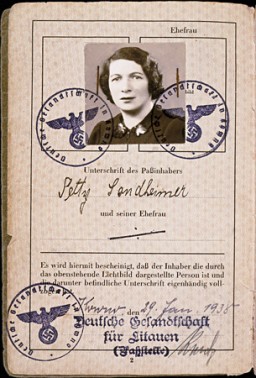
-
Deportation of Jews from Balti, Bessarabia
FilmThe Romanian government was allied with Nazi Germany, but it generally did not deport Romanian Jews to German-occupied territory. Instead, Romania systematically concentrated and deported the Jews of Bessarabia and northern Bukovina to Romanian-occupied areas of the Ukraine. Here, Jews from the Bessarabian town of Balti are assembled in collection camps during the deportations. By the end of May 1942, Romanian security forces had killed or deported most of the Jews in the area. Only about 200 Jews remained…
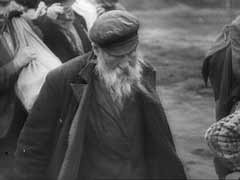
-
Evian Conference fails to aid refugees
FilmDelegates of 32 countries assembled at the Royal Hotel in Evian, France, from July 6 to 15, 1938, to discuss the problem of Jewish refugees. The refugees were desperate to flee Nazi persecution in Germany, but could not leave without having permission to settle in other countries. The Evian Conference resulted in almost no change in the immigration policies of most of the attending nations. The major powers--the United States, Great Britain, and France--opposed unrestricted immigration, making it clear…
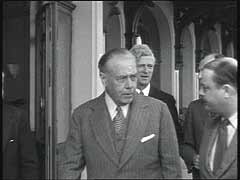
-
Berlin environs, 1942
MapBerlin was a center of Jewish life in Germany and—as the capital of the Reich—also the center for the planning of the "Final Solution," the decision to kill the Jews of Europe. The Wannsee Conference, named for the resort district in southwestern Berlin where it was held, took place in January 1942. High-ranking officials from the Nazi party, the SS, and the German state met to coordinate and finalize what they referred to as the "final solution to the Jewish problem." At the conference, these…

-
Thomas Buergenthal with his mother, Gerda, in Goettingen
PhotoThomas Buergenthal with his mother, Gerda, in Goettingen, Germany, 1950. With the end of World War II and collapse of the Nazi regime, survivors of the Holocaust faced the daunting task of rebuilding their lives. With little in the way of financial resources and few, if any, surviving family members, most eventually emigrated from Europe to start their lives again. Between 1945 and 1952, more than 80,000 Holocaust survivors immigrated to the United States. Thomas was one of them.
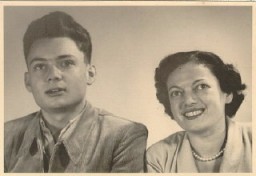
-
Thomas with his mother, Gerda, before Thomas's departure for the United States
PhotoThomas Buergenthal with his mother, Gerda, before Thomas's departure for the United States. Bad Neuheim, Germany, summer 1951. With the end of World War II and collapse of the Nazi regime, survivors of the Holocaust faced the daunting task of rebuilding their lives. With little in the way of financial resources and few, if any, surviving family members, most eventually emigrated from Europe to start their lives again. Between 1945 and 1952, more than 80,000 Holocaust survivors immigrated to the United…

-
Minsk
ArticleIn 1941, the Nazis occupied Minsk and established a ghetto there. Learn more about life in Minsk during World War II.
